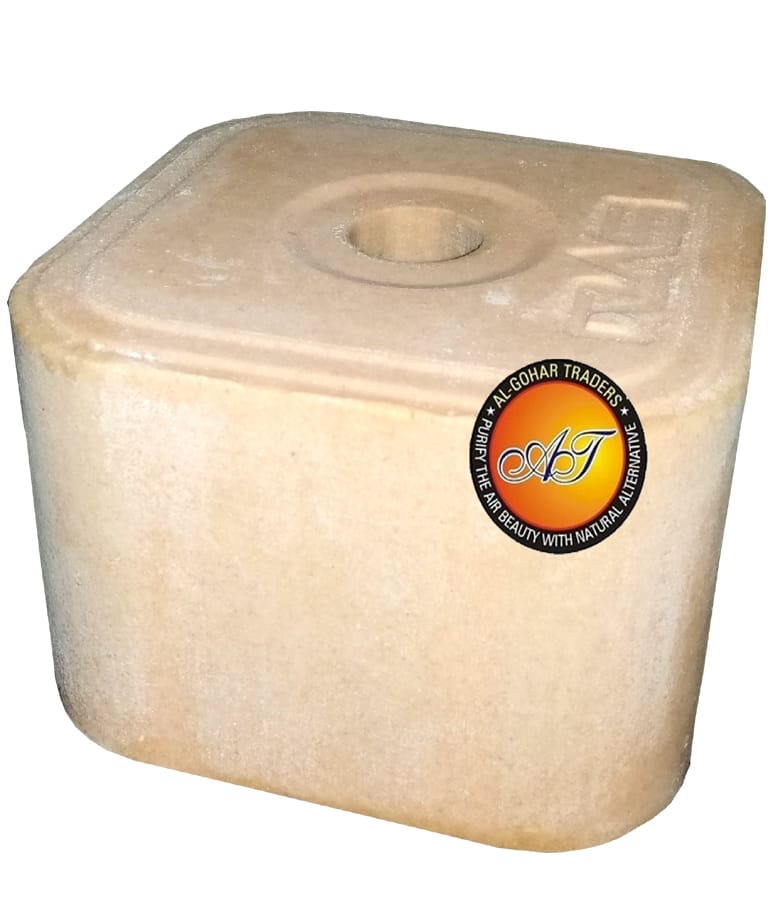Salt licks, also known as mineral licks, are naturally occurring or manufactured sources of salt and essential minerals that animals instinctively seek out. These salt-rich deposits play a critical role in animal health by providing essential nutrients that may be absent or limited in their regular diet. Salt licks can be found in the wild or made as blocks for use on farms and in wildlife management. This guide explores the benefits, types, and applications of salt licks for various animals, as well as their impact on wildlife conservation and animal husbandry.
Algohar World natural salt lamps that are believed to provide various benefits, combining both the aesthetic appeal and the potential health advantages associated with Himalayan salt lamps.
What is a Salt Lick?
A salt lick is essentially a concentrated deposit of salt, typically containing a mix of sodium, calcium, phosphorus, magnesium, and other essential minerals. Wild salt licks occur naturally as mineral deposits on the ground or in rocks, and animals are drawn to these sites to lick or gnaw the salt. Domestic salt licks are manufactured mineral blocks designed for livestock, pets, and other managed animals to meet their mineral needs.
Why Animals Need Salt Licks
Salt is essential for many physiological processes, including nerve function, digestion, and muscle movement. While most animals obtain their necessary nutrients through diet, many lack sufficient access to natural salt sources. By providing salt licks, whether in the wild or on farms, we can ensure animals maintain their health and productivity.
Key Benefits of Salt Licks for Animals
Regulates Hydration
Sodium in salt helps regulate body fluid levels, which is essential for maintaining proper hydration.
Enhances Digestive Health
Salt stimulates saliva production, which aids digestion and nutrient absorption.
Promotes Healthy Growth and Development
Minerals like calcium and phosphorus support bone health and cellular function.
Boosts Immune System
Trace elements such as zinc and selenium are crucial for immune support and disease prevention.
Increases Reproductive Health
Salt licks with specific minerals can improve fertility and reproductive function in animals.
Types of Salt Licks
There are several types of salt licks available, tailored for different purposes and types of animals. Here’s a look at some of the main types of salt licks and how they are used.
Natural Salt Licks
Natural salt licks are mineral-rich deposits that occur naturally in the environment. These are often found in specific geographical locations, usually near rock formations or exposed mineral-rich soils.
Pressed Salt Blocks
Pressed salt blocks are manufactured by compressing natural salt into block shapes. They can be made with pure salt or a combination of salt and other minerals.
Mineral Blocks
Mineral blocks are salt licks that contain a blend of various minerals and trace elements. They are formulated based on specific dietary needs and are color-coded or labeled to indicate their mineral content.
Note: animal salt lick offer a natural, easy way to provide essential minerals that support animal health, productivity, and well-being.
Rock Salt Licks
Rock salt licks are blocks made from naturally occurring rock salt, often with minimal processing. These are especially popular in regions where natural salt resources are limited.
Himalayan Salt Licks
Himalayan salt licks are made from Himalayan pink salt, which is mined from the Khewra Salt Mine in Pakistan. They are prized for their purity and high mineral content.
Salt Licks in Animal Husbandry
In agriculture, salt licks play a crucial role in ensuring the health and productivity of livestock. They help fill nutritional gaps, especially in areas where mineral-rich pastures are unavailable.
Salt Licks for Wildlife Conservation
Salt licks are vital for the survival of many wild animals, especially herbivores, which often lack sufficient dietary sodium. Wildlife conservationists use salt licks to support wild populations and improve habitat quality.
Creating and Maintaining Salt Licks
If you’re planning to set up a salt lick for livestock or wildlife, there are several things to consider for ensuring maximum effectiveness and safety.
Steps to Set Up a Salt Lick
Location Selection
Place salt licks in accessible yet protected areas, ideally near water sources and in shaded locations to prevent rapid weathering.
Choosing the Right Type of Salt Lick
Select a salt lick type based on the animals’ needs, environmental conditions, and mineral content.
Regular Maintenance
Replace salt blocks or natural salt licks periodically, as they can erode or degrade over time due to weather exposure.
Prevent Overuse
Monitor animals’ use of the salt lick to prevent over-consumption, which can lead to health issues like salt toxicity.
Environmental Impact and Conservation Considerations
While salt licks are beneficial for wildlife and livestock, their usage must be carefully managed to avoid environmental impacts. For instance, introducing salt licks in sensitive ecosystems may attract non-native species or cause soil degradation due to mineral buildup.
Conclusion
Animal salt licks play an indispensable role in both animal husbandry and wildlife conservation, providing essential minerals that support health, growth, and reproduction. With a range of types—from natural rock deposits to manufactured mineral blocks—salt licks can be tailored to meet the specific needs of livestock or wildlife populations. By carefully selecting and managing salt licks, we can enhance animal welfare and contribute to a balanced ecosystem.
